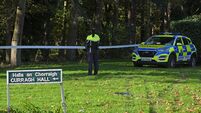What’s good for the goose isn’t always good for the gander
It’s only when he starts to load the boat that he realises this is more complicated than he thought at first. If he leaves the fox and the goose together on one side of the river, Reynard will make bits of Mother Goose before he gets back.
If, on the other hand, he leaves Mother Goose and the corn together, he’ll return, having unloaded the fox on the far shore, to find one full goose and one empty corn bag.
If he takes the goose and the fox and leaves the bag of corn behind him, all is fine and dandy, except that when he leaves the two animals on the other side of the river to return and retrieve the bag of corn, the fox will have a free go at the goose, the only difference being the location.
The owner of this motley crew eventually finds a perfect solution, albeit one which requires an awful lot of loading, unloading and rowing. It’s not unlike the situation facing primary school principals in small schools around the country who find themselves with a child who had had an accident or is unwell and needs to be taken home.
In such small schools, the staff may consist of a principal and one or perhaps two other teachers. One of them is deputed to take the sick child to where the sick child lives.
Except, under the new child protection rules, that individual teacher must not be in a car in charge of one child on its own. There has to be another child or adult present. Absent an available adult, that means taking another kid from the school on the journey to bring the sick youngster to where the sick youngster lives.
Except, as you will realise, once the teacher arrives at the sick child’s house and hands the youngster over, the teacher is then left with one child to take back to the school, which, of course, is against the rules.
In this situation, not unlike the man with the fox, the goose and the bag of corn, the teacher has to do a logistics exercise involving three children.
Two perfectly healthy children have to be removed from class and loaded into the teacher’s car (or whatever vehicle is doing the ferrying) so that once the third child — the sick one — is unloaded at their home, neither of the other two youngsters is alone with the teacher.
This ensures the rules are abided by. It also ensures that two students other than the sick one waste an hour or more of their school day and enlarges the teacher’s supervisory task.
(It also exposes two healthy children to the viruses carried by the sick student, assuming the ailment is a virus-born illness.) For Principals in small primary schools, this is just one of the constant complications of the raft of regulations which have been headed their way over the past few years. They don’t complain about it. Even if they wanted to, it wouldn’t be safe to, because the child protection issue is still so raw in many people’s minds that any nay-saying on any front is immediately interpreted as failure to commit to the safety and integrity of vulnerable young people.
Our primary schools are just one of the areas — the many areas — where the comfort of explicit regulation and the satisfaction of provably fulfilling detailed rules is beginning to serve as a disincentive to common sense.
I’ve been struck, in recent months, when working with managers in the public service and in the private sector, by an emerging syndrome. It’s a kind of informed helplessness.
IT works this way. You’re working with a group of managers on a course designed to enhance their lateral thinking. Or their capacity to respond to change. Or their ability to think flexibly under pressure. Or their skill at leadership in response to unprecedented challenge. All of the things we desperately need people to be able to cope with and react to.
You present the group with a scenario and sit back to watch them collectively address it. Strengths and weaknesses immediately come into play. Some people can’t put a wider frame around an issue and work out how to address, not just this specific issue, but others like it. Some managers show great imagination and creativity. Some groups pull together, analyse the issues and come up with collaborative solutions.
That’s the way it has been up to recent times.
Now, when you present a management group with such a scenario, sure as shootin’, there’ll be a candle-snuffer in the group. (A ‘candle-snuffer’ is the lethal person in any company who can immediately tell you what CAN’T be done.
They have a phenomenal capacity to snuff out collective thought, innovation and the unequalled buzz of coming up with new ideas.) The candle-snuffer, these days, is an expert in defensive bureaucracy.
They’re the person who knows what the child protection guidelines won’t let you do and what the health and safety guidelines will prevent you from doing.
Now, let’s be clear. The bureaucratic candle-snuffer is not a bad person.
They’re often the person who keeps companies on the right side of the law, and workmates on the right side of an A&E trolley or a sexual harassment complaint. They know the rules. They’re often well paid, not just to know the rules, but to make sure everybody else knows the rules too, and abides by them.
Put them in a group designed to develop managerial skills, however, and what the bureaucratic candle-snuffer does is create a Mrs Gummidge atmosphere, where everybody ends up silently asking “Wot’s the good of anyfink? Nuffink.”
Industry and the public service spend a fortune training promising staff in leadership skills. The great leaders of history and of business are profiled in such courses. Everybody from Lord Nelson ignoring the signals from higher authority by putting his telescope to his blind eye to General Patton telling his lads that their job is not to die for their country but make the other guy die for HIS country.
Participants on these courses thrill to the examples of visionary, courageous, creative leaders who saw the great possibilities in a new technology or direction and inspired those around them to break the rule and go for it.
It will be amazing if these decades produce matching heroes, particularly in industry. Because many of the most inspiring characteristics of great leaders of the past would now fall foul of bullying legislation or of health and safety regulations.
We’re headed for what looks like a safer working environment, and, indeed, in some respects is a markedly safer working environment.
The danger is that the ever-present books of overly detailed guidelines will create a safety that is sterile, and a kind of management that majors on form-filling rather than inspiration.















